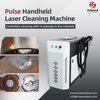
What Are the CNC Turning Cutting Tool?
Generally, when you think of CNC Turning Cutting Tools, you would think of thread cutting, round nose turning and facing tools. These tools are used to turn parts from a piece of wood into a machined part. These tools are available in different sizes, shapes, and types. Having a good understanding of these tools is important for you to get the most out of your CNC Turning Machine. Thread cutting tool Thread cutting tool for CNC turning should be installed securely. Make sure the tool tip is 0.2 to 0.5 mm above the center of the workpiece. Also, make sure the angle of the tool bit is between 15 and 30 degrees. https://www.chinamaijin.com/products-49239 The angle of the tool bit affects the chip cutting process. A large front angle will wear out the tool. It is also easy to break, and it is more likely to create ripples on the thread surface. The thread turning tool should have a narrow cutting depth. This is especially important for threads that are low in strength. This will help reduce the vibration on the thread. Round nose turning tool It's a good idea to know which tool you're using before starting your project. It's also a good idea to know how the tool is supposed to perform in order to avoid wasting valuable time and money. A round nose tool can be reused so you don't have to waste your money on a brand new tool. It is also easy to replace the blade if it starts to dull. Facing tool Facing is one of the most common machining operations. The workpiece is cut slightly longer than it will be cut for the final part. The workpiece is then faced and squared with the axis of the lathe. A machinist may choose roughing and finishing cuts. A CNC turning cutting tool can face the workpiece using the lathe or hand feeding. A facing tool has a side cutting edge that cuts the surface perpendicular to the workpiece's rotational axis. This angled cutting surface removes the thin layer of material on the surface of the part. The workpiece's surface is not perfectly smooth, so a machinist will have to perform multiple passes to create the desired contours in the workpiece. These passes are done at a small radial depth of cut to create topological features. Spotting tool bit A spotting tool bit is also used for other applications. This type of tool makes an accurate hole start point for a drill bit, which can then be used for other types of drilling. It is used in the metal working industry to create an indentation on the location of a hole. It can also be used to form a chamfer on the top of a drilled hole. When using a spotting tool bit for CNC turning, you need to keep a few important points in mind. First, you need to determine the diameter of the hole you are spotting. You should also measure the depth of the hole. Typically, a spotting tool is used in conjunction with a cap screw to form the hole. If the hole is a deep hole, it will require a thicker bit than if it is a shallow hole. |
|










